CitiCAP Expert Journal: Get an update on what has been happening in the last 6 months in Lahti
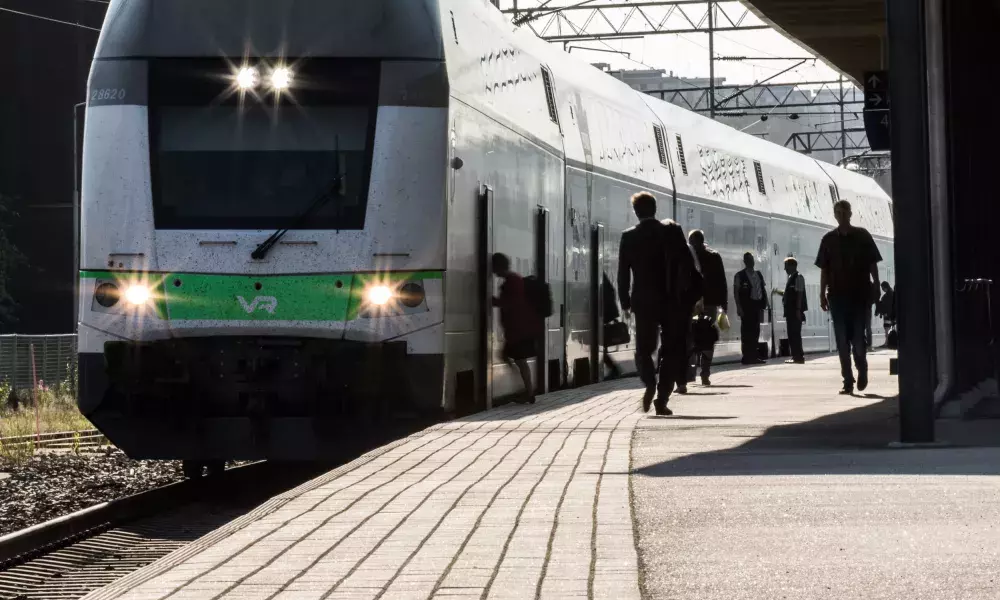
In Philip’s words, the city being awarded the Green Capital of Europe in 2021 offers significant opportunities to raise awareness of the CitiCAP project. The next thing to achieve will be to scale up the PCT and make significant process on the cycle superhighway and the SUMP. A positive signal is that more businesses are engaging in the PCT which will help to reach out to even more citizens.
Finally, Philip looks into the challenges faced by CitiCAP; although progress is very good overall, attention is needed in some of the challenges that cut across all UIA projects but overall performance can be seen to be improved when compared to previous Journals! Read through to find out why!
Executive Summary
The third edition of the CitiCAP (citizens' cap and trade co-created) Journal describes and analyzes the progress of the project in the last six months, from April 2019 to October 2019. During this period the progress of the project is in line with what was planned.
The content of this edition is based on my site visit to Lahti that took place in October 2019 and on regular online meetings with the team during the Journal’s timeframe. Section one accounts progress to date and details the launch of the Personal Carbon Trading (PCT) scheme which lies at the core of CitiCAP. It also provides an update on some of the scheme’s other core elements - the launch and testing of the PCT scheme and the development of the infrastructure needed to implement its Sustainable Urban Mobility Plan (SUMP) and cycle highway. The chapter also provides an update on the scaling up of the project and the city’s policy announcements which have potential ramifications for CitiCAP.
Section two outlines the main implementation-related challenges faced by the project. Although progress is very good overall, attention is needed in some of the challenges that cut across all UIA projects but overall performance can be seen to be improving when compared to previous Journals. Finally, section three looks at the key learning points and opportunities for scaling up of the project.
The next journal will pay further attention to the advancements of the implementation process, notably the development and lessons learned following the PCT launch.
The goals of the CitiCAP project are to promote sustainable mobility, collect and make available digital data on mobility and develop new transport services for citizens. The CitiCAP project will experiment with a PCT scheme for mobility as part of the Lahti region's transport policy and build a main cycle route based on smart solutions (Lahti city center – Apilakatu street).
In practice, PCT means that citizens will benefit from reducing their own emissions from mobility. They could receive, for example, various benefits in the traffic environment, as well as incentives for service use. For instance, citizens whose mobility emissions remain below their personal quota levels could be offered cheaper public transport or bicycle maintenance services via an online marketplace. The aim is to also get employers involved in the CitiCAP project, as they can reward their employees for taking sustainable transport.
The project seeks to build a new model for the SUMP process by integrating the traffic and spatial master planning processes into the same co-designed entity. Strategic investments in cycling will be included to increase its impacts and will include a smart main cycle route, as indicated.
One of the basic requirements of CitiCAP is to collect comprehensive data on people's mobility choices. A light and replicable mobility data platform will be created to implement PCT to serve as a planning tool for City mobility planners as well as an open access mobility data source for innovators.
Since the last journal, the following key milestones of the project are foreseen. This journal provides an update of implementation in terms of progress against these expected goals. Encouragingly, significant progress has been made in some of the project’s key milestones which the City can be rightly proud of.
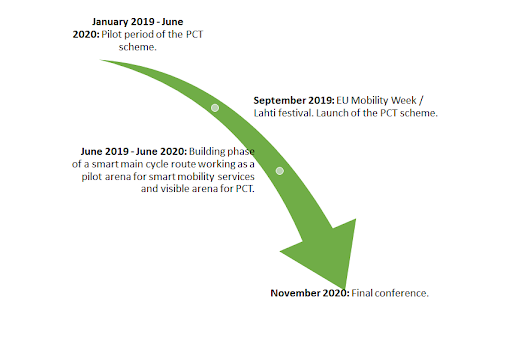
City of Lahti; 1 Business support organisation: Lahti Region Development LADEC Ltd; 2 Higher Education and Research Institutes: Lappeenranta University of Technology (LUT); Lahti University of Applied Sciences (LUAS); and SMEs: Moprim, Future Dialog, Good Sign, Infotripla and Mattersoft.
Progress to Date
Journal Two identified three key areas that needed to be tackled in order to progress against the CitiCAP goals and milestones:
- How to change the mobility attitude and behaviour of citizens to promote the shift from private car to sustainable mobility?
- How medium-size cities may develop their mobility environment: increase the use of sustainable mobility modes, enhance the multimodality and decrease CO2 emissions, while they cannot use all mass transport options that are available for larger cities?
- How to engage the local community to ensure sustainable urban mobility planning and service provision?
The following section will focus on progress against these areas and the key achievements since Journal Two. In addition, this section outlines some of the key policy announcements that have been launched over the summer which have potential ramifications for the CitiCAP project.
Over the summer, the CitiCAP emissions trading application was brought to the test phase. The application automatically detects the user’s movement and the emissions it causes, as well as the purchase price.
Approximately 100 Lahti University of Applied Sciences polytechnic students registered for the first phase of the application. In addition, the project team members are involved in testing the application. The number of participants was limited by the fact that currently only the app version is suitable for Android phones but still accounts for around 466 active registered users by the end of October. The iOS version will be coming later this year alongside the fully developed marketplace which will be essential if they want to move on from the pilot phase.
In personal emissions trading, each user is assigned the permissible quantity of emissions in accordance with the city's emission reduction targets. The weekly emissions budget is consumed in a manner dependent on the user's mobility choices and clearly indicates that car usage is the least favourable option. So by choosing sustainable mobility modes, users can lower their emissions budgets and earn virtual money. The budget has been calculated for the standard user at 17kg of CO2 per week with people averaging around 21kg of CO2 per week. The permissible quantity of emissions varies on your personal circumstances, for example, where you live or whether you have children. Of the data that is available, the range of users emissions ranges quite significantly with some participants averaging over 100kg of CO2 per week and on the flip side, with some with practically none. It will be interesting to find out whether the high emitting persons will remain in the project as they will receive no benefits from the scheme. This is because when the emissions budget is exceeded, the savings dwindle, but they do not go on the minus side. With virtual money, it is possible to redeem them from local businesses as well as the city's services from the app's marketplace. In addition, as a relatively large number of users are below the threshold, there is the question whether the project will be financially sustainable for those businesses (in the long-term) who are part of the marketplace. The testing stage will not yet assess the functionality of the marketplace. However, during this phase, the city experienced a cyber attack on its IT systems which hampered the development of the PCT technology but luckily this did not stop the official launch of the application to the general public.
The launch happened on Wednesday 18 September and Saturday 21 September where residents had the opportunity to download the application on their phones at the city’s main Museum (Aleksanterinkatu 10). Visitors were introduced to the benefits that the app can bring to the future. Movie downloads and LSL (public transport) travel tickets were also distributed to app downloaders at the event.
The city is using the app to gather people’s views by using surveys to gather information on their mobility habits, preferences and opinions. This offers the opportunity to gain new insights into the mobility patterns of individuals and whether they are satisfied with the transport the city has to offer. It also offers an opportunity for the city to better plan their transport. For example, as the city will know the specific travel patterns of citizens, if say for instance a survey reveals that a group of citizens rate that they are not satisfied with public transport in a specific area of the city then the city knows that there is clearly a problem. Currently the surveys could have follow up questions but there if there was the option to ask why they were not happy (e.g. frequency of service, safety concerns, comfort or lack of offer for instance) then this can aid planning decisions and ultimately financial decision making.
It will be interesting to gauge the long-term buy-in of citizens as PCT often harnesses a mixed response. For instance, I presented the project at the UNFCCC Bonn Climate Change Conference (SB50) over June 17-27, 2019 at a side event that looked at innovative policy instruments to reduce emissions in the transport sector. The aim was to set the stage for raising ambition to curb greenhouse gas emissions, accelerate resilience-building efforts, and ensure that climate policy is built on a solid foundation of the best available science and knowledge. The reaction from the audience was mixed and split between PCT as a potential game changer in the fact that it could be applied to a range of areas, with the building sector being highlighted as a quick win solution with the use of smart metering technologies. In addition, it went beyond the purely technical approach with electrification of transport vehicles often viewed by some as the silver bullet solution to tackling transport emissions. In fact, it was noted for embracing the full ‘Avoid-Shift-Improve’ approach which is recognised as the most effective approach to reducing emissions in the transport sector. On the flip side others found the approach ‘a licence to pollute’ in the fact that you can simply pay to do so. What was interesting was the younger members of the audience taking a more favourable stance to PCT with older participants who took a more negative view.
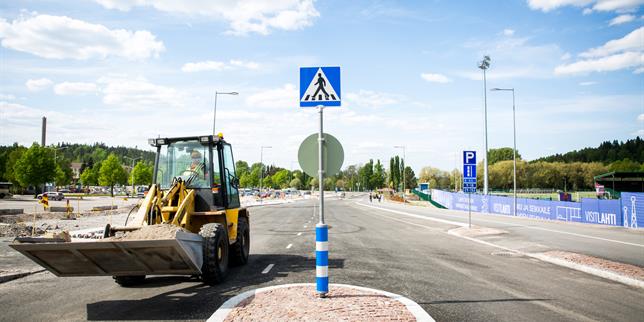
Crucial to the changing the mobility attitude and behaviour of citizens so as to promote the shift from private car to sustainable mobility, citizens need access to sustainable transport modes. As most public transport users walk from their trip origins to public transport stops and from public transport stops to their trip destination, local spatial availability and accessibility is sometimes evaluated in terms of pedestrian (walk) access, as opposed to park and ride or transfers. As such, it is key that citizens have suitable walking conditions. SUMPs aim to promote safe walking and cycling conditions and convenient access to public transport in order to enhance its use. This is also a key concept in the UN Sustainable Development Goals which targets enhanced access to public transport through enhanced walking facilities.
To achieve the goals of the city and to develop a circular economy aimed at eliminating waste and the continual use of resources, the city announced in the summer that one third of the paving sites will be completed with reclaimed asphalt, which represents one fifth of the area. In municipal engineering projects, all demolished concrete is recycled. The Municipal Engineering Division has also produced regional guidelines for promoting the recycling of concrete aggregates. The cycle superhighway which is part of the CitiCAP project will also use recycled materials in its construction based on these guidelines.
The aim is to build a 2.5 km long bicycle highway with the purpose to enable smooth and safe cycling all year-round. The cycle path will be separated from both pedestrians and cars in order to create a clear hierarchy between different travel modes. In total, around €1.6 million euros has been earmarked for this section of the UIA CitiCAP project. Street plans had started to be consulted at the start of the year but there have been some resistance to the proposed plans as there would be a perceived impact to the local biodiversity. As such, it will be necessary to undertake a second hearing on the proposed plans. In addition, it will be necessary to undertake a second round of procurement tendering which will occur over the autumn to ensure adequate bids are received. On a positive note, the aim is to launch a city wide shared bike system in 2021 in order to encourage a further update of sustainable transport modes.
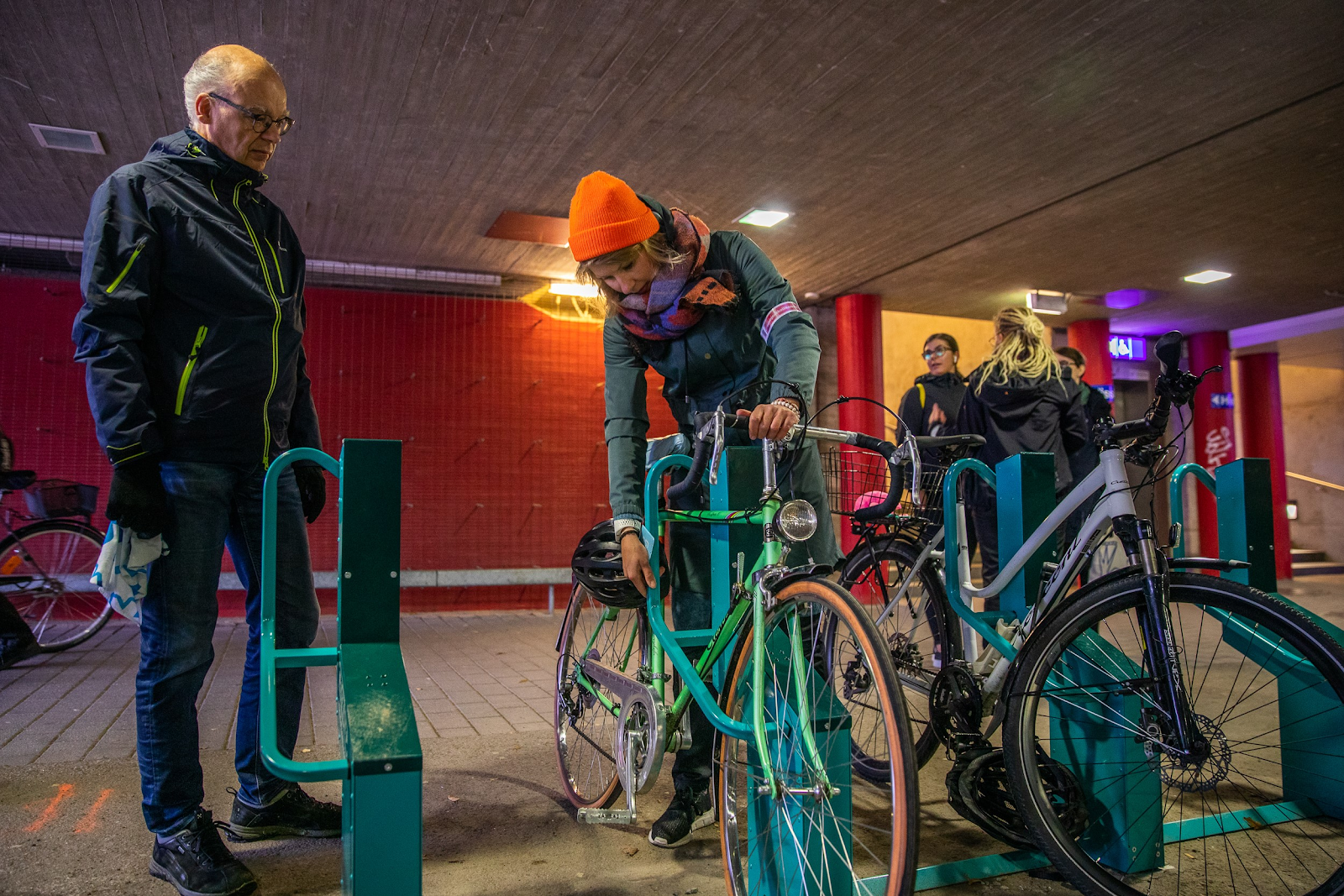
Further to the cycle superhighway, CitiCAP aims to improve cycling conditions and on September 10 bike racks were placed in the Travel Center Tunnel at the southern end of the train station. This will help to develop a multimodal sustainable transport network and these bicycle racks form a crucial part of the CitiCAP project cycle path. The bike path serves as a test platform for many intelligent solutions as well as other services that promote sustainable mobility. The value-adding solution for cyclists was sought in the Innovation Contest in 2018 as detailed in Journal One. The competition received 10 high-quality proposals from four countries: England, Japan, Estonia and Finland. The solutions included traffic control, ease of maintenance, lighting and bicycle parking. Over the next 6 months, there will also be a review of the traffic management system and the bus route reorganisation in order to improve the efficiency of the entire transport system.
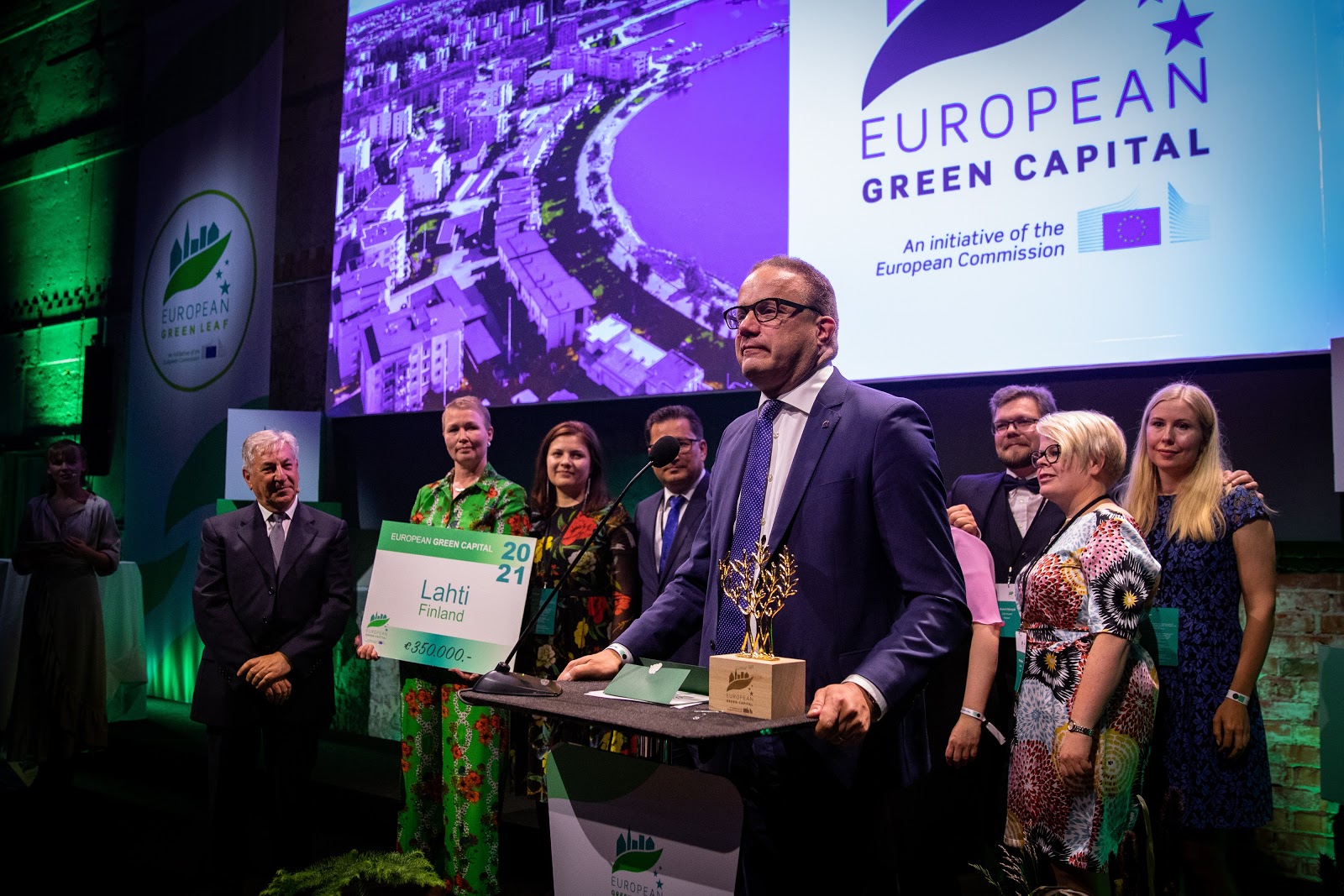
Journal 2 detailed that the city had applied to become the EU Green Capital in 2021 with the CitiCAP playing a prominent role in the application. On 20 June, Lahti was appointed as the first Finnish city to win the European Green Capital at an awards ceremony in Oslo.
The title of European Green Capital is the European Commission's recognition of a city that is a pioneer in environmental activities, serves as an example to other cities and develops innovative solutions to environmental challenges. Winning the title means that in 2021, a number of international and local environmental events will take place in Lahti. This is an excellent opportunity to raise awareness of the CitiCAP project as it will significantly help in sharing best practice and reaching out to potential partner cities which is key to scaling up the PCT model which is a core objective of CitiCAP.
In the same month, the City Board approved the strategic goal to become a net carbon neutral city by 2025. As Finland’s foremost green city, Lahti leads the way in reducing carbon dioxide emissions. Among Finland's large cities, Lahti has the most ambitious goal, which is in line with the city's status as a forerunner in climate work and in the European Green Capital 2021 competition.
Lahti's goal is to reduce the total production-based emissions in the region by 80% from 1990 levels by 2025. The City of Lahti's measures for climate change adaptation and mitigation support the entire region's climate goals and create an interesting development environment for university activities and local businesses.
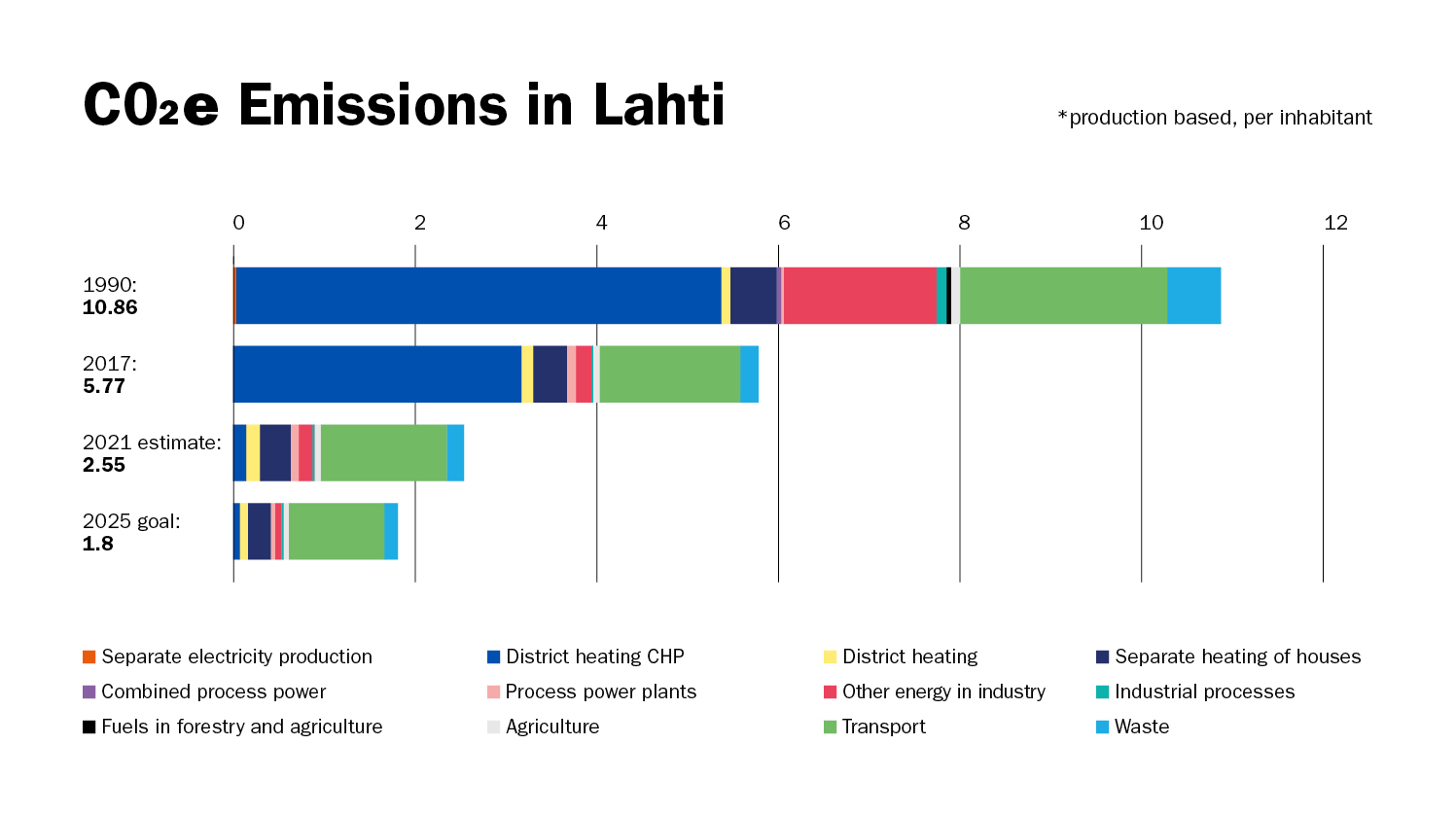
Lahti will implement the objectives of the Finnish Government Programme, 10 years ahead of schedule and the future goals of the EU 25 years ahead of schedule as proposed by the new EU Green Deal. The new Government wants Finland to achieve carbon neutrality by 2035. The Government aims to reach this goal by reforming taxation, among other means.
This new commitment to net neutrality means that CitiCAP will need to be a success if the city is to reduce emissions to the level that it thinks it can achieve. A good road network was developed for cars, making it a very convenient transport mode in the near term future which highlights the need to ensure a balance of positive and negative emissions. Also, the cold climate, hilly landscape and rather sparse population favours motorization, with a current modal split at around 61%. Public transport constitutes 5% (around 90% of the City’s buses are low emission buses and belong to the cleanest EURO VI category), walking 26% and cycling 11% with the remaining other transport modes (2016 data). In 2015, around 85% of residents lived in a pedestrian/public transport zone (70% of all trips are taken within a 5km radius of the urban core). The objective is to double the market share of public transport and walking which is hoped to replace over 10% of the journeys currently undertaken by private vehicles.
Considerable changes in transport are therefore needed to achieve Lahti’s goals. CitiCAP aims to fast track this change through the three core facets of the project. There is clearly a need to influence people’s mobility behaviour in favour of sustainable transport modes for the city to meet the net neutrality target as the current modal split is not sufficient. This also requires that the PCT makes significant changes in behaviour in a short space of time, the issue being behaviour is often ingrained and takes time change. It is clear that the PCT must be scaled up throughout the city and that the cycle superhighway and SUMP meets people’s needs. However, it is clear from the above graph that transport emissions will remain the largest with only incremental reductions envisaged. While the Paris Agreement talks about net carbon neutrality, that does not necessarily mean zero emissions. It is clear that fundamental changes in behaviour and emissions is needed to meet the target which I hope CitiCAP can play a leading role.
For the business involved in the project the question of replication with other cities is a difficult one. As the system runs on virtual euros, there is limited cash flow other than European funding in the project. In addition, as this is an untested project it will not therefore be part of the core business of those involved. To scale up, there is a need for seed funding but also for it to attract a number of larger cities. The technology itself is relatively easy to replicate but will still need local and regional data which slows down the process which many small and medium companies rarely have. To raise awareness of the project and to encourage more cities to join, ‘Follower Cities’ workshops will be held early next year. Once the market place is up and running and data starts to flow through the system, then this will be an opportunity for the private sector players to see how they can use the it to provide new, additional services and products for the market. This can then make the business case for investing in PCT but this will also depend on the city’s policy on opening the data.
CitiCAP Challenges - Mapping CitiCAP against the established UIA challenges
A number of specific challenges have been identified that cut across all UIA projects. The table below provides a traffic light analysis of what these are and some observations as to how the project faires against them based on current and planned initiatives.
With the appointment of Lahti as the EU Green Capital for 2021 and the commitment to be carbon neutral has helped raise the profile of the project within the city meaning that leadership for implementation is considered to be strong. This will help to ensure collaboration across a range of city departments going ahead which will help ensure coordination of the SUMP and Master Plan process which will determine how the project will progress as it moves towards implementation of key aspects of the project. The 2020 approval phase of the Master Plan / SUMP will complete this process.
So far the project has very much focused on getting the PCT right in terms of the on-line architecture and policy side. As this is an EU funded project there have been no major procurement issues at this stage as everything has been budgeted for. The major issue is when the project looks to scale up with other cities because the question is how will public organisations procure a similar PCT system because a one-size fits all approach will not work so it will need to meet local needs and standards. This could impact the future development of the scheme but local businesses are now looking at future financial opportunities which may help overcome any future public procurement issues.
It is envisaged that once the cycle superhighway moves towards the implementation phase then public procurement issues are likely to become more important, especially since the city plans to relaunch the tender.
Given the range of stakeholders involved and the need to engage a range of city departments, this remains challenging but as mentioned above, leadership for implementation is hoped to overcome this. The fact that all relevant city departments are involved in the development of the SUMP and that local and regional bus transport is carried out by Lahden seudun liikenne LSL (Lahti Region Transport) this should help the integration of the SUMP with the wider regional spatial Master Plan. This will help to ensure better integrated cross-departmental working going ahead. As mentioned in this journal, now that the city is united by a shared vision to be carbon neutral where all aspects of the city will need to work towards, it is hoped that this will encourage stronger cross-departmental working which will only be strengthened in 2021.
High levels of participation are evident across stakeholder groups. It is a core facet of the project but the stakeholder consultation process has delayed implementation of plans, notably with the cycle superhighway. It is important that the co-creation element of the project is not lost which the Green Capital award can play an important role as it has the ability to engage citizens and business to implement projects that can be complementary to the CitiCAP’s key elements.
Cyber security has hampered the development of the PCT application but timelines and deliverables remain intact but means that should this happen again there is a risk for the monitoring and evaluation of the success of the PCT scheme once the application test gets started. There is still a lot of data that needs to be collected if there is to be a proper assessment of the success of the project. Given that this data should be captured as part of the test in 2020 - it is hoped that this will be appropriately addressed.
The objective is to establish a joint venture to ensure long-term funding and upscaling. Progress has been made in identifying appropriate partners but the project will need to identify a future business case for a PCT if it is to be scaled up in Lahti but also in other cities.
Businesses need to see the value that the PCT scheme can bring to them if they are to continue to invest in the scheme beyond CitiCAP. This is where the value of data can play an important role but as a limited amount has so far been generated there is a risk to the future financial sustainability to the project. This will be an important element of the testing phase in 2020.
By adopting a participative approach, significant communication and buy-in with citizens is ongoing but this has also delayed the process as stakeholder’s concerns of aspects of the project need to be taken into account, notably in relation to the SUMP process and cycle highway. During each four-year cycle of Lahti Direction process, the residents of the city have been invited to participate in the planning for example at workshops or via surveys. Lessons learned from this process will be assessed in 2020 so that this can feed into the future planning processes.
A lot of communication with target beneficiaries has also been undertaken in relation to the PCT scheme because if it is to be successful citizens and local business needs to understand the benefits of such a scheme. The testing of the scheme will be an important aspect to communicate with target beneficiaries going ahead.
Fruitful ongoing discussions regarding scaling up have been had with a number of cities interested in following the Lahti model. This should hopefully bring the scale that the business industry are seeking and that they see the benefits for investing into such a scheme.
As there is limited data with the PCT it is still unsure what the benefits will be for stakeholders and the city but should the tests prove positive the contact network for upscaling is in place. It is envisaged that with greater focus on the city in 2021 as the EU Green Capital. It is therefore anticipated that further follower cities and business will want to upscale successful CitiCAP elements.
Take Away Points & Conclusions
Progress to date has been positive in all key areas of the project, notably the official launch of the PCT. In addition, being awarded the Green Capital of Europe in 2021 offers significant opportunities to raise awareness of the CitiCAP project. Perhaps it is a missed opportunity that more was not done to raise awareness of CitiCAP during the Finish Presidency of the EU. The next challenge will be to scale up the PCT and make significant process on the cycle superhighway and the SUMP. A positive signal is that more businesses are engaging in the PCT which will help to reach out to even more citizens. As the final stages of project preparation come closer, the main focus will be to shift to implementation which will be the main focus of future journals.
The CitiCAP project is an internationally significant example for the successful promotion of innovative, sustainable mobility. As the first PCT ever in the mobility sector, it will be essential that this project is communicated beyond just the city. As such, it will be important that CitiCAP features prominently in the 2021 year of the Green Capital.
Over the next six months CitiCAP will really start to take off. The building phase of the smart main cycle route - working as a pilot arena for smart mobility services and visible arena for PCT - will also start shortly alongside the development of the SUMP. The next edition of the Journal will focus on this critical phase.
About this resource
The Urban Innovative Actions (UIA) is a European Union initiative that provided funding to urban areas across Europe to test new and unproven solutions to urban challenges. The initiative had a total ERDF budget of €372 million for 2014-2020.
Similar content




